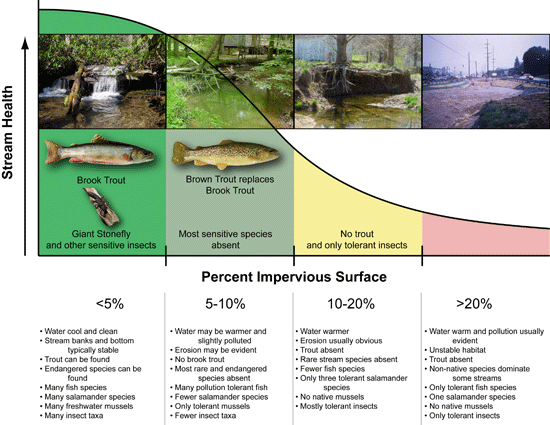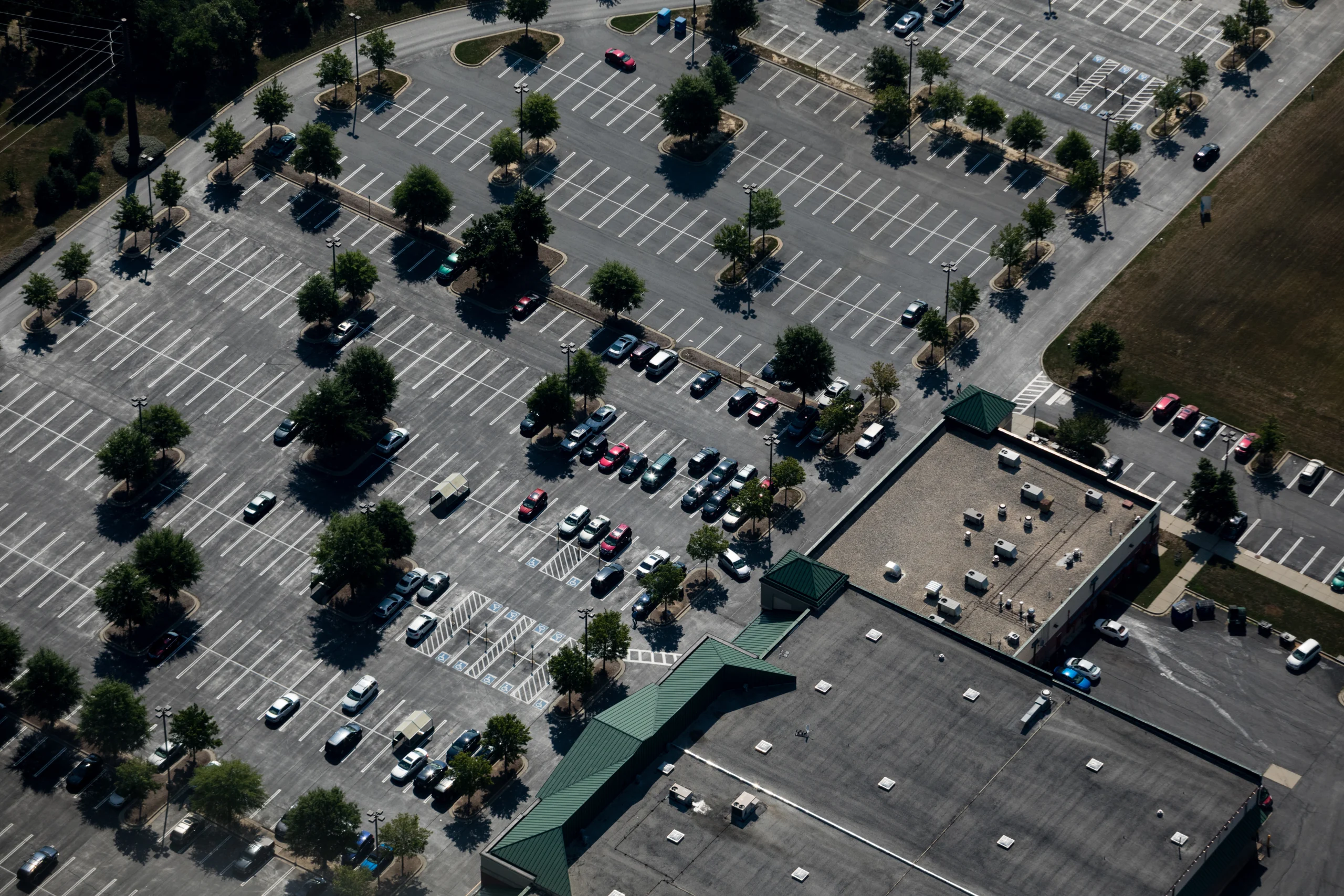Backyard trees are critical elements of wildlife habitat. They provide excellent stormwater management, shade streets and houses, and provide health benefits. It is important to protect as many backyard trees as possible while recognizing that individual trees are not as valuable from a natural perspective as intact forests are. Healthy watersheds are further from our cities and have much less total development, but can be pushed quickly towards a tipping point to lower health and biodiversity with even relatively small amounts of development.

When sprawl occurs in our less-developed areas, it is more likely to and often does cut down intact forests. This is less likely to be the case when development is contained in compact layouts close to already-existing impervious surface including infrastructure, transit, and other housing. Indeed, a nationwide study found that “housing development in terms of impervious surface cover shows that compact development does reduce the number of watersheds that become stressed over time.” In the Washington, DC region, while there have been some successes in reforestation and tree canopy planting, we have overall lost forest cover over time as the region has urbanized, suburbanized, and sprawled.
The two NASA satellite maps above show the change in impervious surface in the DC region between 1984 and 2010. They display extensive increase of suburban and sprawl development in the region’s outer areas, including many places not serviced by transit. The massive increases in impervious surface from sprawl come from several sources- including roads (people spread further apart need more paved roads per person to get from place to place) and house size (larger houses enabled by sprawl development mean more land is taken up by each person). Not coincidentally, our region’s #1 and #2 sources of greenhouse gas emissions are also transportation and housing.
The interactive Global Forest Watch map below shows tree cover loss from 2001-2021 (shown in pink), measurable at a global scale. Note the extensive tree cover loss in the exurban counties of Loudoun (VA), Prince William (VA), and Howard (MD), due to suburbanization. Closer-in, Prince George’s County is the county in Maryland that has lost the most forest cover from 2013-2018, according to a definitive technical study conducted by the Chesapeake Conservancy and the Harry R. Hughes Center for Agro-Ecology.
Nature Forward advocates that urban areas with low tree cover benefit from aggressive shade and street tree planting. We work to preserve habitat corridors, such as stream valley parks, through our suburban landscapes. And in the farther-out regions, we work to fight new highways, poorly-planned subdivisions in rural areas like Ten Mile Creek, and other forms of sprawl. Because, in addition to the climate impacts of sprawl, it is bad for our watersheds and bad for our forests.

